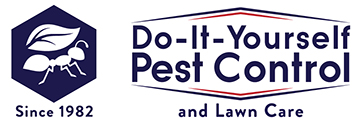
Tandem Insecticide
Starting at $119.95
BUNDLE & SAVE 5%!
Product Information
Tandem Insecticide - Broad Spectrum and Dual Action
Tandem Insecticide will control more than 90 pests and can be used in food handling and residential and commercial areas. Tandem has a broad turf label for landscapes and lawns against such insects as grubs, billbugs, chinch bugs, and more.
Tandem Insecticide combines two powerful active ingredients for two modes of action. Tandem Insecticide is formulated with thiamethoxam (neonicotinoid class) and lambda-cyhalothrin (pyrethroid family). These two active ingredients give you a quick kill and provide a residual for long-term control. This new product by Syngenta is also formulated with a patented iCap technology. This a technique that uses multiple sizes of microcapsules that protect the active ingredients from harsh environmental conditions, providing a long-term controlled release for up to four months.
Tandem Insecticide-Versatile
Tandem Insecticide also serves as a systemic with its active ingredient, thiamethoxam. Tandem as a systemic will travel through the entire plant. Tandem will attack honeydew-producing pests such as whiteflies, scales, and aphids. As a side benefit, this systemic action which kills such pests as aphids, limit the supply of food for sweet-feeding ants.
Syngenta advertises Tandem Insecticide as a "cupboard to curb" insecticide. Because of its flexibility in use. As a broad spectrum insecticide and various use methods and sites, there is less need for a multitude of products.
| Packaging | 32 oz or 64 oz |
|---|---|
| Product Label | Tandem Label |
| SDS | Tandem SDS |
| More PDF's | Information Sheet |
| Target Pest | More than 90 pests, including ants, beetles, caterpillars, cockroaches, fleas and ticks, flying insects, mites, mosquitoes, wasps, honeydew-producing insects, wood-destroying insects, and more. In addition to perimeter pests, Tandem also has a full turf label to control grubs, chinch bugs, fire ants, cutworms, and other ornamental pest insects. |
| Active Ingredient (s) | Thiamethoxam - 11.6%, Lambda-cyhalothrin - 3.5% |
| For Use : | Tandem Insecticide is labeled for use in, on, and around buildings and structures for the control of listed pests, including on lawns, ornamental trees, and shrubs around residential, institutional, public, commercial, and industrial buildings, and in parks, recreational areas, and athletic fields. |
| Yield | Mix between 0.55 fl oz (16 ml) to 1.1 fl oz (32 ml) to get a concentration of 0.065% -0.13% final dilution . Coverage is an average of one gallon per 1,000 sq feet |
| Mixture|Application | Mixed with water, do not mix with oil. |
| Application | Tandem Insecticide is approved for indoor use in residential, commercial and foodhandling areas as a spot, crack-and-crevice, or void treatment. Outdoors, Tandem can be applied as perimeter spray, spot, crack-and-crevice or void treatment. Tandem can be applied to soil or vegetation around structures, lawns, turf, and applications to building foundations, up to a maximum height of 3 feet. Tandem Insecticide may be converted into a foam used to treat structural voids. For applications inside voids, expansion ratios of 15:1 are suggested. |
| Shipping Restrictions | MA, MD, NY |
| More Instructions | PRECAUTIONS: Let treated surfaces dry before allowing humans and pets to contact surfaces. Use in all indoor permitted sites, including food-handling establishments, must be restricted to areas which eliminate exposure to food-handling surfaces and areas that are not easily accessible to occupants. Do not use this product with oil. Do not apply this product in any room being used as a living, eating, sleeping, or recovery area by patients, the elderly, or infirm when they are in the room. Do not apply to classrooms, nurseries, or daycare facilities when in use. Do not apply to institutions (including libraries, sports facilities, etc.) when occupants are present in the immediate treatment area. Do not apply this product to edible growing crops or stored raw agricultural commodities used for food or feed. Do not allow applications to contact water inhabited by fish, such as in aquariums and ornamental fish ponds that are located in/around structures being treated. |




